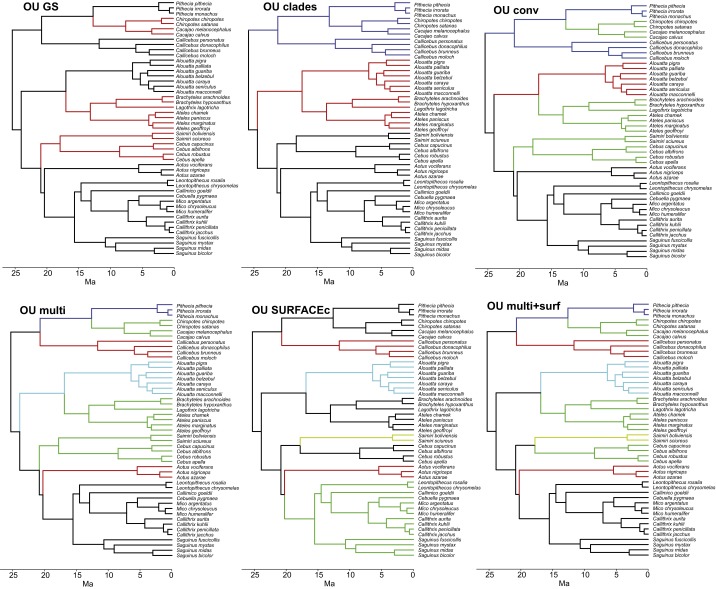Fig. S4.
Alternative multivariate OU hypotheses for the evolution of platyrrhine brain shape. The trees depict the different multiregime OU hypotheses included in the model selection analyses performed in mvMORPH. The first model (OU GS) hypothesizes group size (GS) as the only defining dimension of the adaptive landscape for brain shape [large GS species (i.e., 15 or more individuals) vs. small GS species]. The second model (OU clades) considers a fully phylogenetic hypothesis where each platyrrhine family occupies a separate adaptive peak. The third model (OU conv) is a more complex model (five regimes) where each family occupies an adaptive peak but GS drives morphological convergence. “OU multi” model is equally complex as “OU conv” model but hypothesizes an adaptive landscape defined by three ecological dimensions (diet composition, locomotion strategy, and GS; Supporting Information). In this model, GS is also the ecological dimension driving brain shape convergence. The other two ecological dimensions were previously used to explain phenotypic diversification (e.g., in body size) in the platyrrhine adaptive radiation (17, 18). The “OU SURFACEc” model is a slightly modified version of the best-fitting model returned by the SURFACE analysis. The last model (“OU multi + surf”) is a modified version of the OU multi model after the SURFACE results, in which Saimiri is assigned a different adaptive regime. Additionally to these multiregime OU models, we also fitted a single-peak OU, Brownian motion, and early-burst models.

